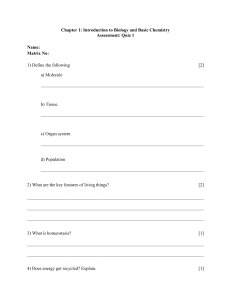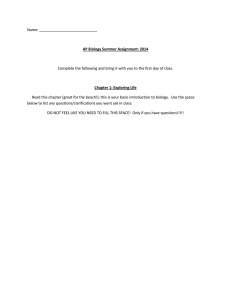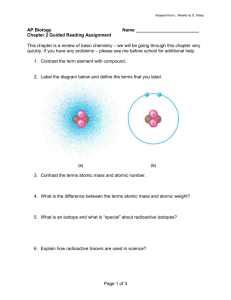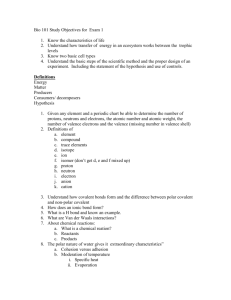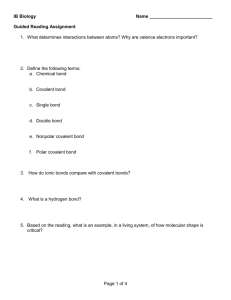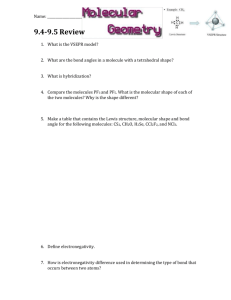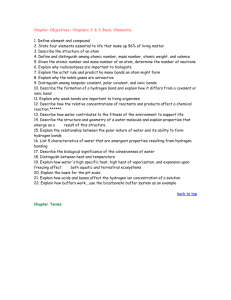Unit One Study Guide
advertisement
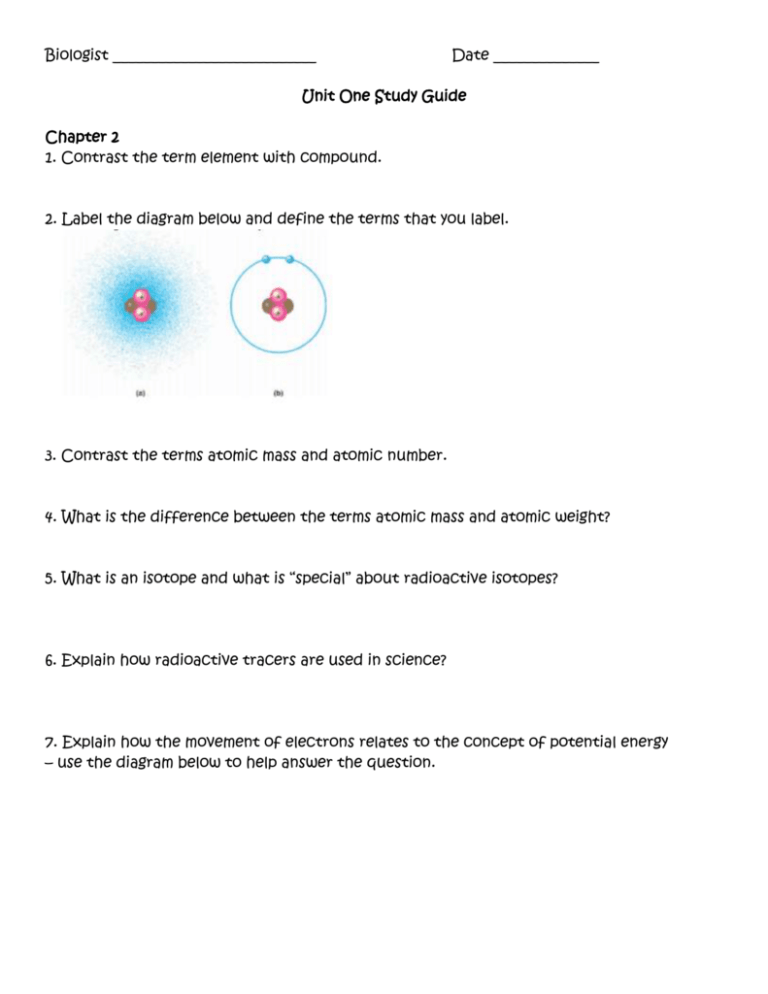
Biologist ___________________________ Date ______________ Unit One Study Guide Chapter 2 1. Contrast the term element with compound. 2. Label the diagram below and define the terms that you label. 3. Contrast the terms atomic mass and atomic number. 4. What is the difference between the terms atomic mass and atomic weight? 5. What is an isotope and what is “special” about radioactive isotopes? 6. Explain how radioactive tracers are used in science? 7. Explain how the movement of electrons relates to the concept of potential energy – use the diagram below to help answer the question. 8. What determines interactions between atoms? Why are valence electrons important? 9. Define the following terms: a. Chemical bond b. Covalent bond c. Single bond d. Double bond e. Valence f. Electronegativity g. Nonpolar covalent bond h. Polar covalent bond 10. What is the difference between a structural and molecular formula? 11. How do ionic bonds compare with covalent bonds? 12. Compare and contrast hydrogen bonds and van der Waals interactions. 13.Based on the reading, what is an example, in a living system, of how molecular shape is critical? 14. Define a dynamic chemical equilibrium in terms of quantities of reactants and products. Chapter 3 1. Why is water considered a polar molecule? 2. For each of the below listed properties of water – briefly define the property and then explain how water’s polar nature and polar covalent bonds contribute to the water special property. Include an example in nature of each property also. a. Cohesion b. Adhesion c. Surface tension d. High specific heat e. Heat of vaporization f. Evaporative cooling 3. What is special about water and density? 4. Define the following terms: a. Solute b. Solvent c. Aqueous solution d. Hydrophilic e. Hydrophobic f. Colloid g. Hydration shell h. Molarity 5. Label the diagram below to demonstrate the dissociation of the water molecule and then relate this diagram to pH. 6. What defines an acid and a base? 7. Why are “apparently” small changes in pH so important in biology? 8. What is a buffer and write and explain the carbonic acid buffer system in human blood? 9. What is acid precipitation and why is it important to living organisms?
